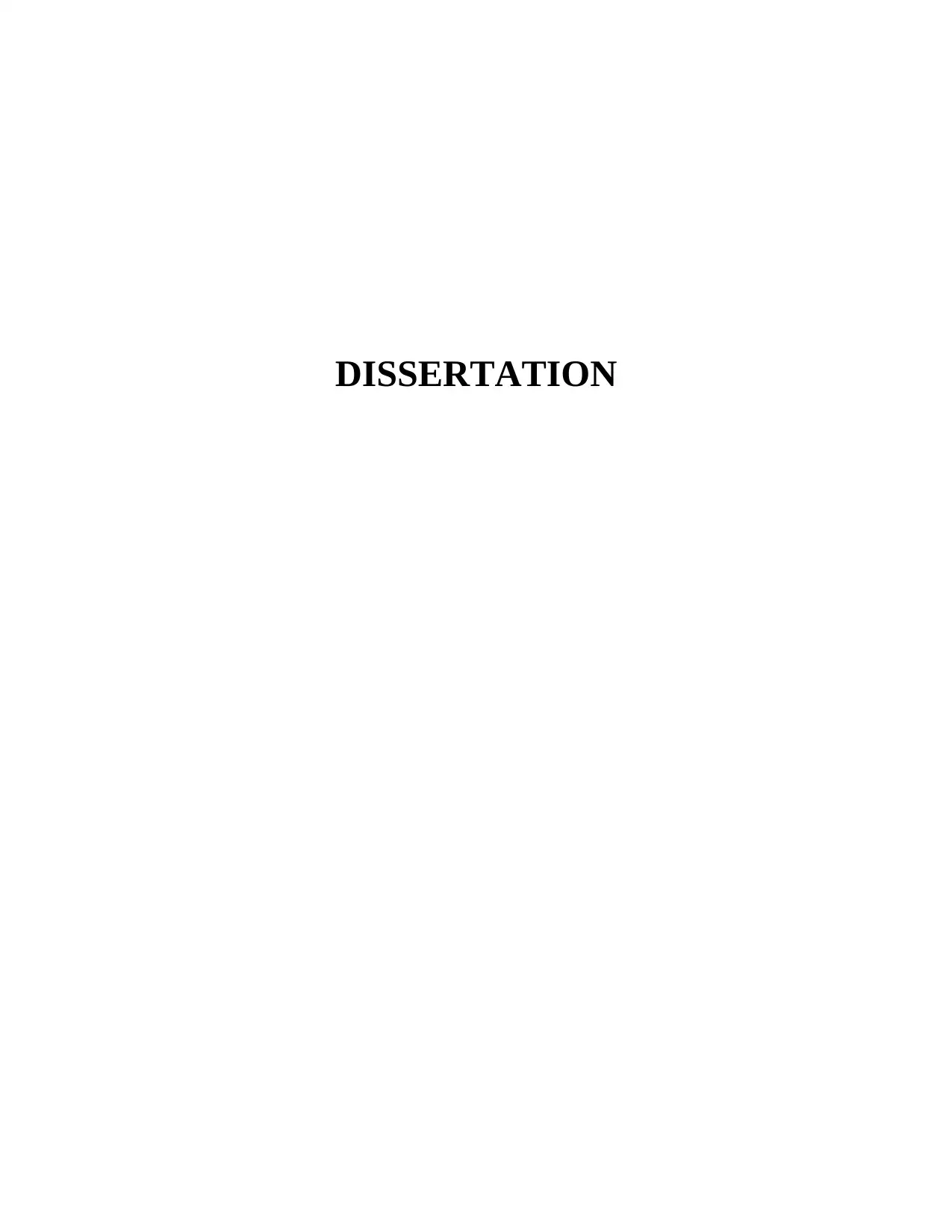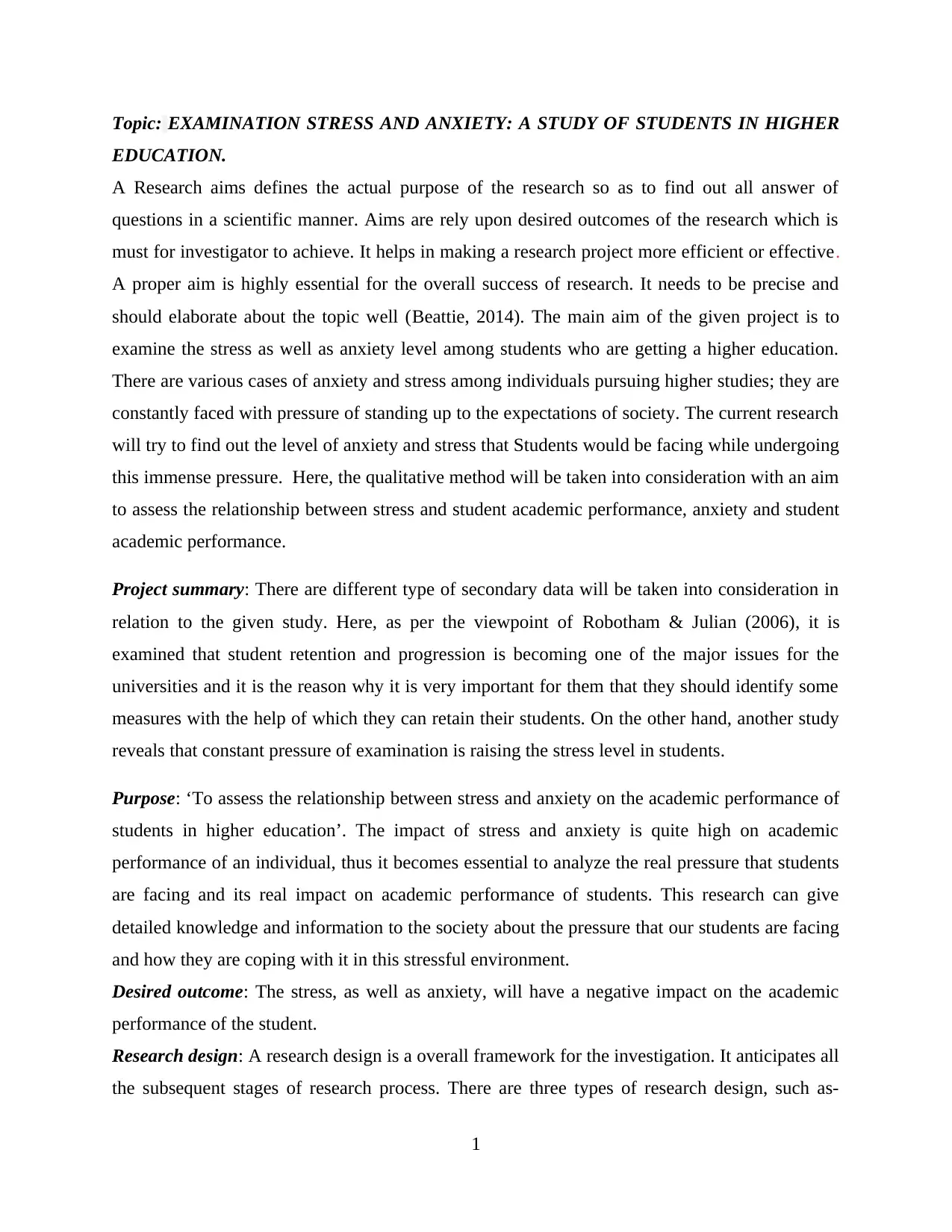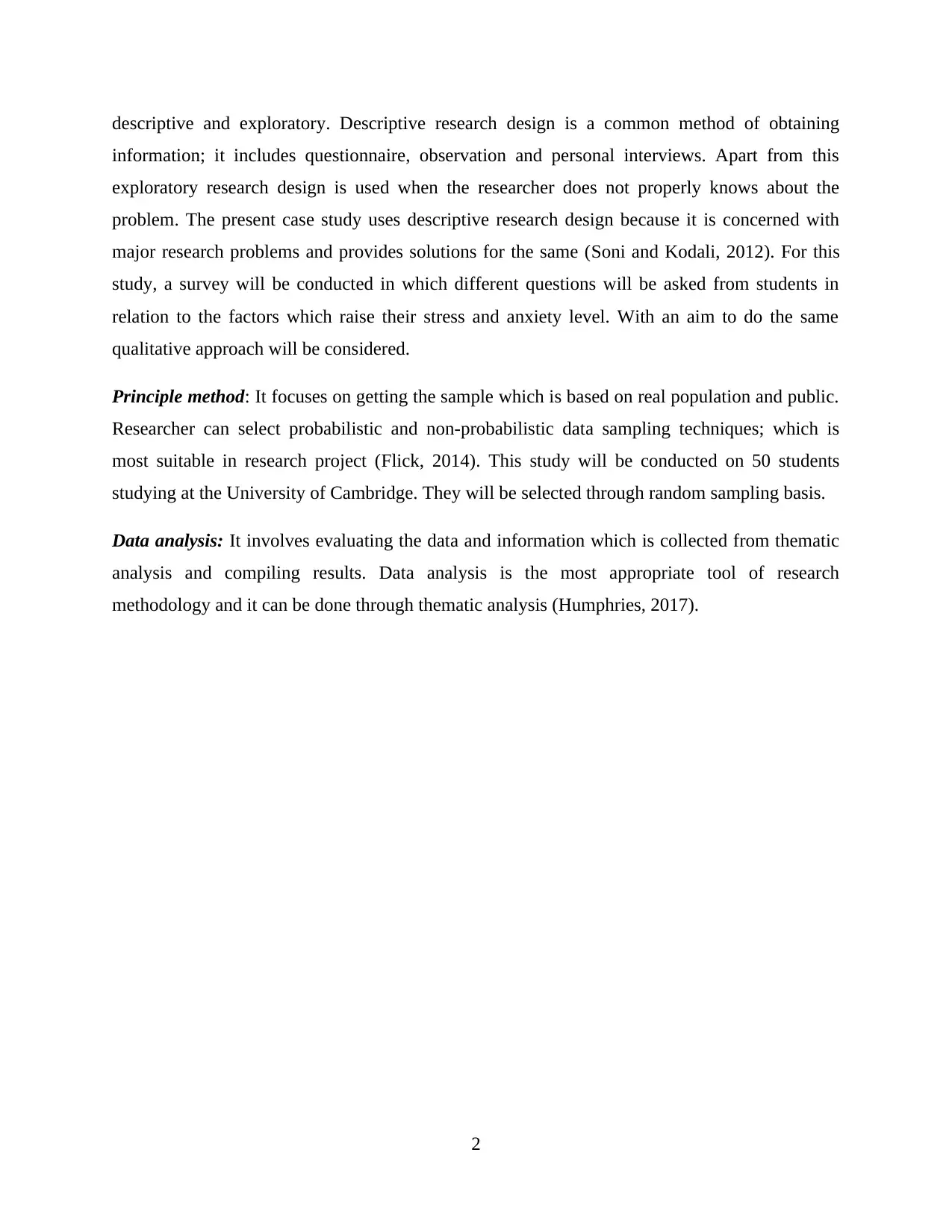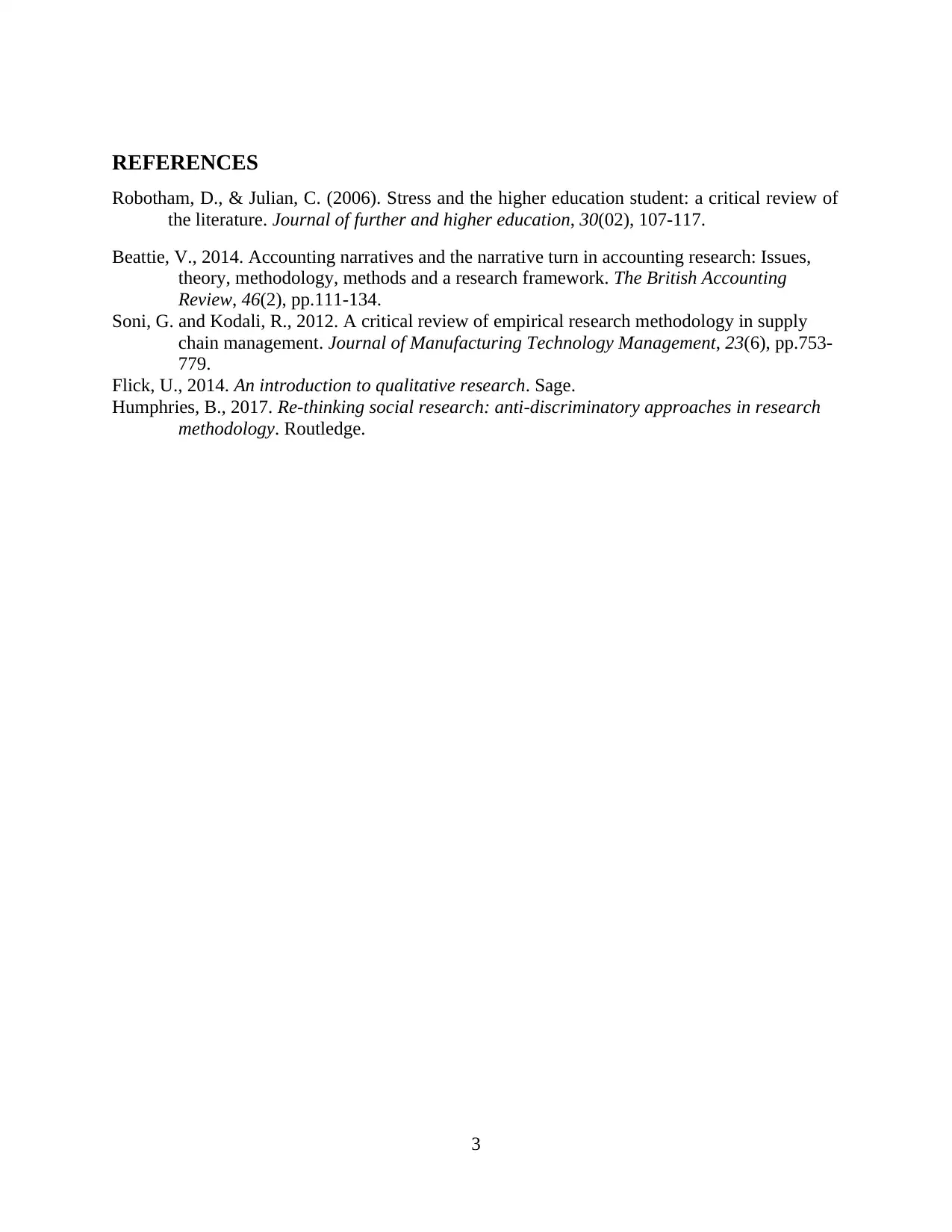Research on Examination Stress and Anxiety in Higher Education
VerifiedAdded on 2019/09/16
|4
|839
|283
Report
AI Summary
This dissertation explores the impact of examination stress and anxiety on students in higher education. The research aims to assess the relationship between stress, anxiety, and academic performance, utilizing a qualitative approach. The study focuses on students at the University of Cambridge, employing a descriptive research design with a survey to gather data on stress and anxiety factors. The methodology includes random sampling and thematic analysis to evaluate the collected information. The research anticipates that stress and anxiety will negatively affect academic performance, providing valuable insights into the pressures faced by students and their coping mechanisms. The report references key literature on student stress, retention, and examination pressure, offering a comprehensive overview of the topic and its implications for higher education.
1 out of 4











![[object Object]](/_next/static/media/star-bottom.7253800d.svg)